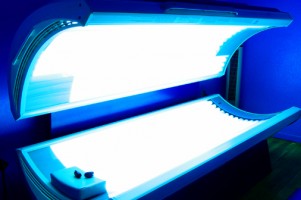
Recent studies indicate that tanning beds account for as many as 400,000 cases of skin cancer a year, including 6,000 cases of melanoma (the most deadly form of skin cancer), specifically. As a result, on December 18th, the U.S. Food and Drug Administration (FDA) proposed banning anyone under the age of 18 from using tanning beds, a move that could reduce the incidence of tanning beds and skin cancer in the U.S.
Tanning Beds and Skin Cancer Risks to Those Under 35
Young people under the age of 25 are most at risk from indoor tanning; specifically, chances of developing melanoma jump to close to 60 percent in those who use tanning beds at all before the age of 35. After that (and overall), tanning beds increase the chances of developing melanoma by 20 percent.
While Some States Ban, Others Increase Availability of Tanning Beds
Melanoma, specifically, has continued to rise dramatically over the last few decades, and while some states have already banned indoor tanning for minors, in others, tanning salons now outnumber the number of fast food establishments like McDonald’s. There are around 20,000 indoor tanning salons in the country and an additional 20,000 other facilities that include tanning salons in them (such as health clubs).
If the proposal passes, however, the FDA has noted that enforcement will be difficult. In addition, the Indoor Tanning Association has noted concerns that the proposal will burden its members with unnecessary costs and is unnecessary because customers “are well aware of the potential risks of overexposure.” But who is at fault when it comes to knowing the association of tanning beds and skin cancer.
Duty to Warn Of Cancer Risks?
Many would argue that people are actually unaware of the risk of tanning bed cancer, and this duty to inform customers about the health impacts has not been met. In fact, at least a third of all adults in the U.S. have reported using tanning beds (mostly women); and this includes approximately 1.6 million minors tanning indoors every year. In addition, those who use them tend use them frequently. Indeed, women under the age 40 are the ones that have been getting melanoma, and the rate has risen by a third since the early 1990s.
Part of the FDA’s proposal would also involve:
- Minors signing a release form before they tan, indicating that they understand the risks involved with the indoor tanning process;
- Manufacturers making warning labels on the beds more prominent;
- Manufacturers including an emergency shut-off switch on the beds; and
- Mandating that salon owners require (versus recommend) the use of protective eyewear to be worn during tanning sessions.
Contact Our Attorneys for Help
Melanoma skin cancer (aka malignant melanoma or cutaneous melanoma), although less common, is more serious than other types of skin cancer and usually shows up as black or brown tumors (although they can be pink, tan, or white as well). Common sites where melanomas develop include the chest, back, legs, neck, and face. If not caught early, it is likely to spread to other parts of the body. Evidence has been gathering that tanning (exposure to ultraviolet rays) is a major risk factor, and that evidence is, arguably, known by tanning bed manufacturers and tanning salon owners, who should be warning customers about the harmful effects of indoor tanning. In some ways, melanoma is becoming the next mesothelioma in terms of an industry in denial of the effects of its products on human health.
If you or a loved one has been diagnosed with skin cancer from tanning beds, a New Orleans-based lawyer with Harrell & Nowak can help by discussing your potential case and providing you with your options. Contact us today to learn how you and your loved ones can obtain justice in the wake of a diagnosis.
